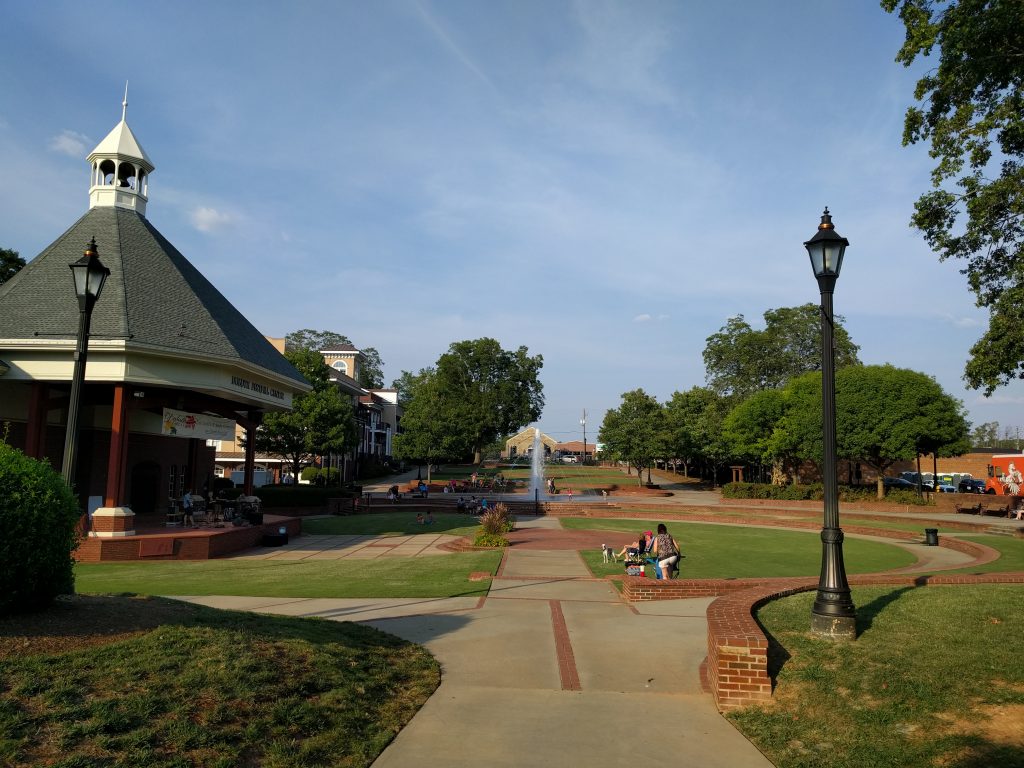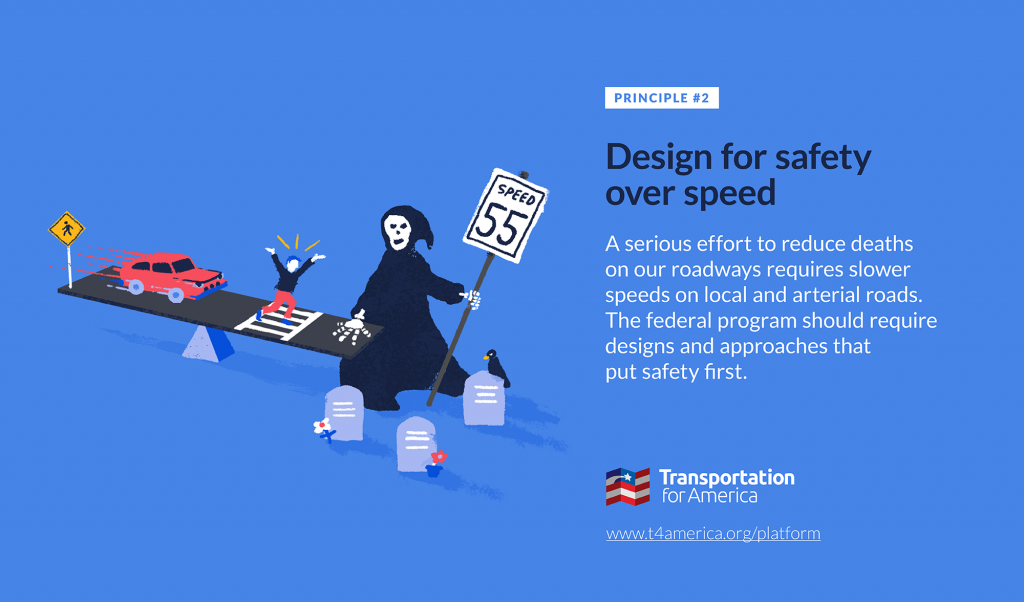
News
By Steve Davis, December 10, 2019
The notion of the suburbs is nestled deeply in the collective imagination in America, but as we wrote recently, “the suburbs of today aren’t necessarily the suburbs of yesteryear.” In a future that is increasingly urban, where suburbs are rapidly changing, what changes should they consider to stay prosperous and resilient?

Curbed’s recent “suburbs issue” takes a long look at how America’s suburbs are becoming more diverse, more dense, more populated, and facing a future that will look far different than their perhaps idealized past. The full package examines the concept of homeownership, how rapid demographic change in one metro Atlanta suburb (my hometown, in fact!) is a bellwether for other suburbs, and what specific policies suburban leaders should consider to stay competitive and relevant.
Curbed reached out to Smart Growth America for our take on how these changes coming to our suburbs could be harnessed for good. Our brief answer for their roundup focused on what should be the long-term economic development focus for many suburbs: find ways to meet the booming demand for housing in walkable neighborhoods in order to boost the local tax base and avoid the predictable decline that typically comes as once-new suburbs age.
Getting rid of mandatory single-family zoning is good, but lost in the recent conversation is that we’ll need a better option in its place. Form-based zoning codes can help create the mixed-use, pedestrian-oriented development that many of today’s young singles, empty nesters, and families—and influential companies—are seeking. This won’t be easy, though. One huge challenge is the amount of costly infrastructure required to transform typical suburban places to something denser and more walkable. Expanding federal, state, and local rehab tax incentives could help attract more private capital to cover the costs of building more walkable infrastructure, while also encouraging developers to retrofit old commercial and residential buildings—regional malls or single-family housing—into mixed-use buildings or multifamily housing.
In fact, Smart Growth America, through our LOCUS coalition of responsible real estate investors, is currently working to introduce a piece of federal legislation that would expand a federal tax incentive in a way that could help retrofit many suburbs into more walkable places. That’s a great start.
But SGA also works on nearly every facet of changing the built environment—from transportation to land use and development, economic development, and all the in-between things that communities need to thrive. So how can suburbs harness these changes to become better places to live and work for decades to come? Here are two others:
Become a place worth being in, rather than just a place to pass through, by getting rid of vehicle speed as a measure of success
How we invest our transportation dollars has enormous ramifications on how places grow and change. And prioritizing speed as the ultimate measure of success is one reason why destinations have been pushed farther and farther apart, why it’s hard to get where we need to go each day, and why a place like Cleveland the same population today as in 1950 yet occupies twice the amount of land with far more congestion and thousands more highway lane-miles. If the overarching measure of success is keeping cars moving fast—on all types of roads—your community will never be able to build a prosperous downtown, safe streets for people, or even modestly walkable corridors filled with everyday destinations.
Many suburbs were borne of massive federal investments in enormous roadway projects designed to move commuters long distances, and then the creation of those suburbs then resulted in a need for other newer, bigger roads in an endless loop. This is one reason why many suburban areas today are choking on traffic and have some of the most deadly streets for people walking or biking.
One of our Transportation for America program’s three fundamental principles is design for safety over speed. When it comes to transportation projects in suburban locales, that could mean instead of widening an arterial road, authorities choose to devote an existing lane of traffic to a new bus rapid transit line (that moves far more people) or right-sizing a road to make busy suburban arterial roads (the most deadly type) easier to cross on foot. Passing a Complete Streets policy is another vital step that can help suburbs become more attractive destinations by making it safer to walk and bike—but it’s got to have teeth to make a difference.

However they choose to do it, to survive economically in the future, suburbs will have to become places worth being in, not just somewhere to pass through at high speed. Because there’s a pressing math problem here:
Suburbs must encourage new growth without just incurring equal costs
Even if prosperous today, most suburbs are locked into a pattern of development that ultimately fails to produce enough long-term value to cover the hefty costs required to serve these places with water, sewer, transportation, and other infrastructure over multiple lifecycles. When the bill comes due to replace expensive infrastructure in aging suburbs, those places tend to start declining. And then brand new suburbs sprout up further out where everything is new again because the up-front costs to build are low, the state and federal government will pay to build all the roads, and the massive infusion of new development fills up local tax coffers. For a little while, at least.
To break out of this cycle of decline, suburbs need to solve a math problem: how to increase their tax base (more people, more places with high economic returns) without just increasing their costs (infrastructure, maintenance, etc.) by an equivalent amount? Today’s changing suburbs will have to find ways to serve more people at lower per capita costs.
That could mean prioritizing local transportation dollars to upgrade or expand the sidewalks in the far more valuable downtown vs. building a new cul-de-sac that a city can’t afford to maintain for 50 years. It could mean encouraging (or simply allowing) more development in well-connected areas or creating a new downtown, changing local zoning to allow a wider range of housing types, and providing more transportation options to move those people.

Suburban leaders need to better understand what the potential costs are, and where the greatest values lie with their long-term development decisions. Through fiscal modeling, Smart Growth America has been helping towns and cities of all sizes see that making incremental increases in density or steering new development into existing areas isn’t just a way to save money but can actually bring huge dividends to municipal budgets, when compared to the old model of developing new land in a low-density way.
For today’s changing suburbs—like Duluth, GA featured in the Curbed piece—to evolve, they’ll have to leave behind the unsustainable blueprint that helped create them. The recipe for future prosperity will not be found in doing what got them here. But there’s a better, smarter way to grow, and the suburbs that can turn the page and change their approach to zoning, reconsider speed as the highest transportation priority, and encourage more density will be far better positioned to succeed tomorrow.
Related News

© 2026 Smart Growth America. All rights reserved
Site By3Lane Marketing









